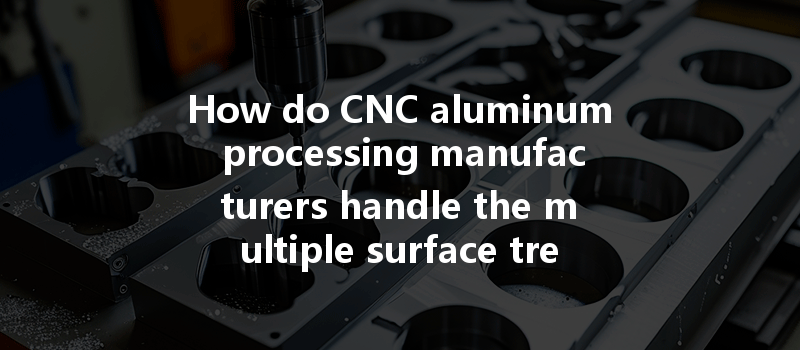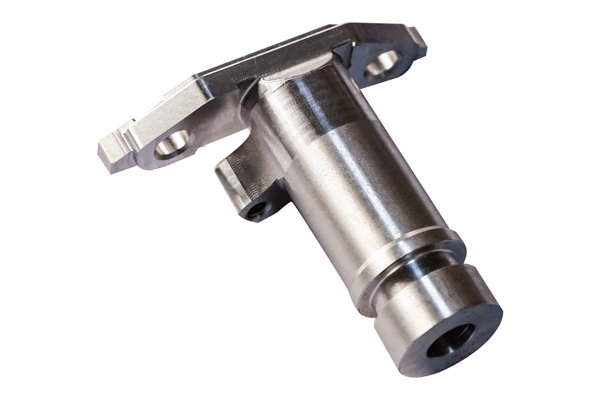Did you know that aluminum is the second most versatile metal after steel? Its lightweight nature, resistance to corrosion, and excellent machinability make it a popular choice across a range of industries, including aerospace, automotive, and consumer goods. However, the efficacy and performance of aluminum parts can heavily depend on surface treatments applied during the CNC machining process.
With the increasing demand for higher precision and functionality in aluminum components, CNC aluminum processing manufacturers are faced with the challenge of efficiently managing multiple surface treatment needs without compromising quality. In this blog, we will delve into the intricacies of how these manufacturers handle varying surface treatment requirements, offering detailed insights into techniques, technologies, and case studies.
Understanding Surface Treatment in CNC Aluminum Processing
What is Surface Treatment?
Surface treatment refers to various processes that alter the physical and chemical properties of a material’s surface to achieve desired characteristics such as enhanced resistance to wear, corrosion, and friction. In the context of CNC aluminum processing, surface treatments can improve part aesthetics, durability, and functionality.
Importance of Surface Treatments
Proper surface treatment is crucial in maximizing the lifespan of aluminum parts while ensuring they meet industry standards. A poorly treated surface can lead to premature failure, increased maintenance costs, and compromised performance. Given these implications, manufacturers must navigate the complexities of different surface treatment methods and select the appropriate one according to the specific requirements of the end products.
Different Surface Treatment Methods
Anodizing is an electrochemical process that converts the surface of aluminum into a durable and corrosion-resistant oxide layer. This treatment not only improves resistance to wear but also provides aesthetic options through dyeing.
Powder coating involves applying a dry powder to the aluminum surface before curing it under heat, resulting in a tough, protective finish. This method offers a range of colors and textures, making it suitable for aesthetic applications.
Electroplating is a process that uses electrical current to reduce dissolved metal cations so they form a coherent metal coating on an electrode. This treatment is often employed to apply a layer of nickel, chromium, or gold on aluminum parts.
Chemical conversion coatings, such as chromate treatments, offer aluminum surfaces improved corrosion resistance and enhanced adhesion for subsequent coatings. This method is particularly essential for aerospace and military applications where durability is paramount.

Laser etching and engraving are methods used for adding designs or specifications to aluminum parts. This method uses concentrated laser beams to remove material and create detailed patterns.
Challenges in Managing Multiple Surface Treatment Needs
Given the diverse applications of aluminum parts, manufacturers often find themselves addressing unique surface treatment requirements for each project. This complexity can lead to difficulties in scheduling and resource allocation.
Surface treatments can significantly impact production costs. Implementing multiple processes for different parts necessitates careful financial planning and management to maintain profitability, especially in high-volume production runs.
With multiple surface treatments in play, maintaining consistency and quality across various batches becomes challenging. Deviations can occur through operator error or variations in treatment conditions, necessitating rigorous quality assurance protocols.
As surface treatment processes can produce hazardous waste, companies must comply with environmental regulations concerning their waste management practices. This adds an additional layer of complexity to managing surface treatments.
Strategies for Efficient Management of Surface Treatments
Establishing a streamlined process workflow is imperative for handling multiple surface treatment needs. By clearly defining each step involved in CNC aluminum processing, manufacturers can minimize errors and enhance productivity.
Recommendations:
Adopting advanced technologies, such as automation and machine learning, helps optimize the surface treatment process. These technologies can offer predictive analytics to foresee and address potential issues before they escalate.
Recommendations:
Continuous training and skill development for employees in surface treatment techniques fosters a culture of quality and efficiency. Educated technicians are more likely to produce high-quality outputs and adapt to new processes effectively.
Recommendations:
Incorporating an integrated quality management system (QMS) allows manufacturers to maintain consistent quality across diverse surface treatment methods. Such systems can facilitate better tracking and reporting of quality metrics.
Recommendations:
Case Studies of Successful Implementations
Case Study 1: Aerospace Component Manufacturer
An aerospace component manufacturer faced challenges in meeting surface treatment needs while maintaining compliance with stringent quality standards. By investing in automated anodizing lines and linear conveyors, they streamlined the anodizing process and reduced cycle times by 35%. Implementing an integrated QMS further enhanced quality assurance, leading to a 20% reduction in defects.
Case Study 2: Automotive Parts Supplier
An automotive parts supplier struggled with fluctuating production demands and corresponding surface treatment needs. By developing modular surface treatment cells that could be configured based on varying requirements, they improved flexibility and reduced capital costs. This strategic move led to a 15% increase in overall productivity.
The handling of multiple surface treatment needs in CNC aluminum processing presents unique challenges for manufacturers. However, with the right strategies—such as streamlined processes, advanced technologies, and thorough employee training—these challenges can transform into opportunities for enhanced productivity and quality.
Understanding the significance of surface treatments is not just relevant for manufacturers; it’s also vital for businesses that rely on high-quality aluminum parts. As you reflect on this topic, consider how the implementation of effective surface treatment strategies in CNC machining can facilitate improved product performance and sustainability in your industry.
In summary, as aluminum continues to be a preferred material across various sectors, the importance of managing its surface treatment requirements will only grow. Investing time and resources into mastering these techniques is an investment in the future performance and longevity of aluminum components.






